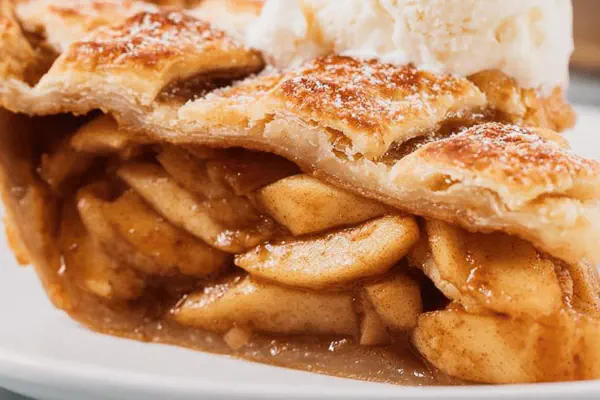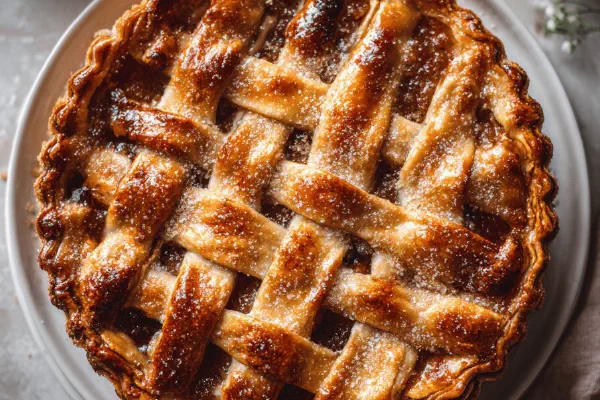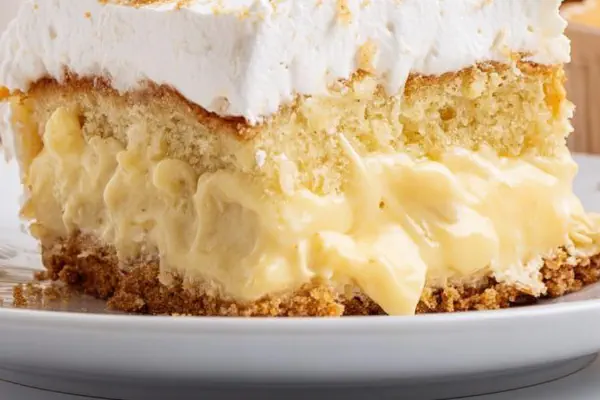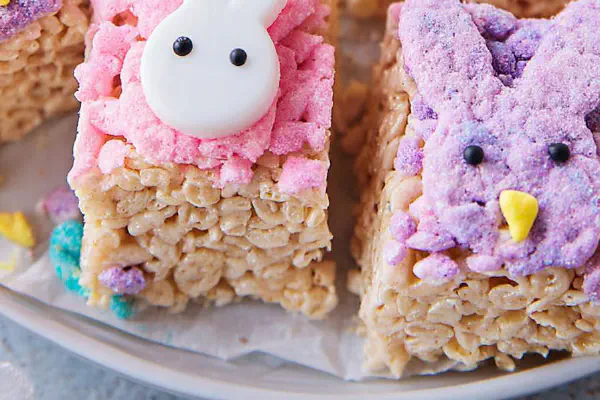Cherry Pie with Yogurt Crust
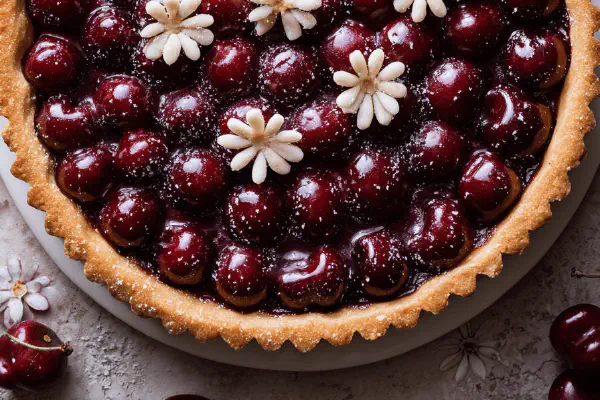
By Emma
Certified Culinary Professional
Ingredients
Crust
- 360 g (2 1/3 cups) all-purpose unbleached flour
- 1.5 ml (1/3 tsp) salt
- 160 g (2/3 cup + 2 tbsp) cold unsalted butter, cubed
- 90 ml (6 tbsp) plain yogurt
Egg wash
- 1 egg
- 15 ml (1 tbsp) water
Filling
- 60 g (1/4 cup + 1 tbsp) quick tapioca, finely ground
- 900 g (6 1/2 cups) pitted fresh or frozen cherries, halved
- 200 g (7/8 cup) granulated sugar
- 20 ml (1 1/3 tbsp) lemon juice
About the ingredients
Method
Crust
- 1. Pulse flour and salt briefly in food processor. Add butter cubes; pulse short bursts till pea-sized granules. Too long warms butter; results in greasy crust. Stop once mixture resembles coarse sand with chunks. Add yogurt; pulse until dough just starts clumping. Avoid overmixing; flours hydrate fast here. Scrape dough onto surface, form two disks, wrap in plastic tightly. Refrigerate minimum 35 minutes or until firm and cold. Cold dough flakes better—textural key.
- 2. Lightly flour work surface. Roll each disk to 28 cm (11 in) circle evenly—thin, about 3 mm thick. Avoid stretching; it shrinks when baked. Gently lift one to line 23 cm (9 in) tart pan. Press inside edges snug; fingers or bottom of glass. Pinch edges forming scallops using finger and thumb; adds character and catches drips. Return both doughs to refrigerator on parchment (one in pan, one on tray).
Egg wash
- 3. Whisk egg and water briskly until homogenous; sets up golden shine and seals pastry edges. Keep covered until use.
Filling
- 4. Prepare oven rack in lower third; preheat oven to 205 C (400 F) for a crisper base.
- 5. Using mortar and pestle or spice grinder, crush tapioca until grain-size fine. This step is overlooked often but crucial for consistent thickening without gritty bits.
- 6. In bowl, toss cherries with crushed tapioca, sugar, and lemon juice. Lemon brightens fruit, slows browning, and tempers excessive sweetness. Wait 10 minutes to let tapioca absorb some juice; thickening starts even before baking. Pour filling into crust-lined tart shell; spread evenly but don’t press down—fruit needs room to bubble.
- 7. Using small flower-shaped cutter, stamp out flower shapes from second dough disk. Distribute flowers in overlapping, decorative pattern atop cherries. Less cumbersome than making a full lattice or solid top; allows steam to vent and creates visually appealing surface. Brush egg wash on flowers liberally; also edges of bottom crust just exposed. This prevents sogginess and deepens color during baking.
- 8. Place tart on parchment-lined tray to catch any filling spills. Slide into preheated oven. Bake for 50 minutes. Watch for bubbling filling through flower gaps; crust edges turn deep golden brown and flowers puff slightly. Utensil poke test not helpful as filling is molten. Oven temps fluctuate; adjust baking by 3-5 minutes depending on browning and filling jiggle. A good cue: edges firm, flowers glisten golden, fruit bubbling steady.
- 9. Remove from oven; cooling critical here. Let tart rest at room temp until lukewarm, about 45 minutes to an hour if possible. Filling firms slightly as fruit juices reabsorb tapioca gel, preventing runniness. Serve warm or chilled. Store loosely covered at room temperature; best eaten within two days to avoid crust sogginess.
Cooking tips
Chef's notes
- 💡 Butter cold. Cube it small. Pulse flour quickly. Overprocess and butter warms, makes crust greasy. Dough looks coarse sand with bits, then add yogurt. Pulse only till it clumps. Overmix toughens. Chill minimum 35 mins; frozen tempting but cold always. Cold dough flakes better—keeps textures distinct when baked. Rolling thin to 3 mm key. Thinness affects bake speed and texture. Avoid stretching; dough shrinks when heated. Thick spots stay doughy or shrink unevenly. Use parchment to chill both dough rounds; one lined in pan, one on tray for cutouts.
- 💡 Crush tapioca with mortar or grinder before mixing. Coarse tapioca clumps, gritty mouthfeel. Fine crush swells evenly; filling thickens without lumps. Toss cherries with tapioca, sugar, and lemon juice. Lemon juice does dual job—brights cherries, slows discoloration, balances sugar. Let mixture sit 10 mins. Tapioca starts hydrating early; thickening begins before baking. Stirring helps juices absorb tapioca granules uniformly; no pressing fruit into crust, leaves space for bubbling juices. Bubbles through flowers show it’s cooking right.
- 💡 Egg wash thins with water; whisk briskly till smooth; brush flowers and exposed bottom crust edges liberally. Keeps top glossy, seals moisture out of crust edges, prevents soggy bottom. Watch baking time closely; ovens vary. Start with 50 mins at 205 C, adjust 3-5 mins by visual cues. Golden flowers puff slightly, edges brown deep gold. Check for steady bubbles through gaps; dough browns fast? Tent with foil mid-bake. Baking long doesn’t always mean done; smell toasted butter for cue, crust firm edges like shell. Utensil poke test useless; filling molten.
- 💡 Cooling step critical. Hot filling too loose; can drip or run. Room temp rest 45-60 mins firms filling as juices gel with tapioca. Chilling optional but better for slice stability. Store loosely covered at room temp max 2 days to avoid crust sogginess. Fridge toughens crust. Reheat gently if chilled. Tray under tart needed to catch drips; cherries bleed juice occasionally. Use fresh cherries if firm; frozen thawed, drained, excess juice discarded to keep filling ratio intact. Greek yogurt works; thicker but reduce flour bit if dough sticky.
- 💡 Pinch dough edges scalloped to catch steam, gives rustic decorative rim. Using flower cutter saves time over lattice or full lid, vents steam, prevents soggy top. Egg wash thick here, deepens color during baking. Dough ball consistency varies with humidity; in dry weather, splash yogurt; sticky? Add tiny flour. Rolling on cold surface helps avoid warming dough. Berries leak juice sometimes; catch early spills with tray. Swap lemon for orange zest for spring fruits; watch sugar—orange sweeter. Crushing tapioca overlooked, no grit or lumps if fine; no tapioca, use cornstarch but less effective, tends to clump.
Common questions
Why crush tapioca first?
Coarse tapioca gritty if not crushed. Crushing makes grains fine. Thickens filling evenly. No lumps. Tapioca granules swell, hold juices. Crushing step skipped leads to uneven gel, clumps in texture. Use spice grinder or mortar; little extra work pays off.
Can I use frozen cherries?
Yes but thaw fully. Drain excess juice or filling gets too runny. Frozen cherry juices dilute filling, dilute sugar ratio too. Fresh better if firm, bouncy flesh. Frozen ones sometimes softer, leaks more. Adjust sugar to balance tartness. Tapioca still swells same. Keep in mind water content varies, watch bake time, texture.
Crust soggy after baking?
Check chill time of dough; not cold enough before rolling can cause sogginess. Egg wash missed edges seals moisture poorly. Baking temperature key; low heat or too fast browning outside, inside stays wet. Preheat oven fully. Bake on lower rack for crisp base. Try crimp edges to hold juices tighter. Allow resting time for filling to gel. Tray catches drips but protects oven too.
How to store leftovers?
Loosely cover room temp, avoid fridge if possible—fridge toughens crust. Eat within 2 days. Reheat gently to avoid drying crust. Chilling makes filling firm but crust soggy next day. If chilling overnight, bring to room temp before serving for softer crust feel. Wrap loosely—plastic traps moisture, lose crispness fast.
